Colour in contemporary Mexican architecture
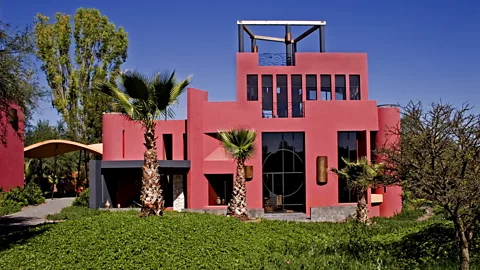 House + House
House + HouseBBC Designed explores the boldest designs inspired by Mexico's colourful culture.
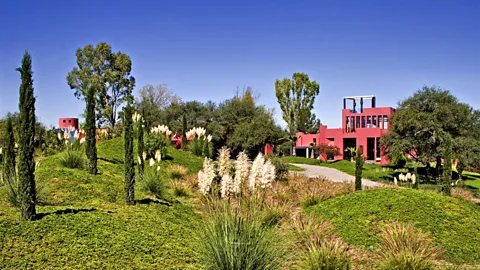 House + House
House + HouseFew places bring to mind colour like Mexico. Just ask San Francisco-based House + House Architects, one of a number of firms driving a contemporary adaptation of bold colours in modern Mexican architecture. The duo behind the firm – Steven and Cathi House – has completed 30 projects in 26 years in Mexico, often relying on master craftsmen to build by hand, juxtaposing bold traditional colours to create contemporary designs.
What inspires the husband-and-wife team?
“The people, the culture, the colour, the smells, the food, the textures, the history, the celebrations. There is almost nothing about Mexico that doesn’t inspire us,” Cathi House tells BBC Designed.
Casa Renacimiento, a converted factory, is one of House + House’s most stunning projects. In the high desert of central Mexico, an abandoned rattan factory sat decaying among ancient trees by the Rio Laja.
A ceramic artist and a writer saw in the property a new life with home and studio. The two existing buildings offered little inspiration, but the survey provided core ideas for the design. An alignment to the ancient church of Atotonilco led to the forms and choreography of movement through the buildings.
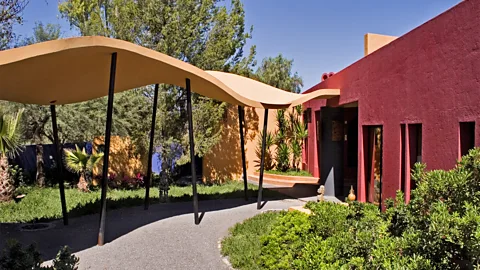 House + House
House + House“Working as we do, it is from another time, a time when architects designed everything, not choosing doors and windows from a showroom or catalogue, but working with the blacksmith to forge them in fire from steel; not choosing a stone veneer to glue to a wall, but driving through the countryside to find a mountain, having men hack out pieces of it with pick axes and then shape and fit it into a wall that will stand for hundreds of years,” says House.
“It’s an experience almost impossible to have in the US, where we are challenged to invent and imagine in ways we have never done.”
“The joy of working with our team includes christenings and ‘quinceañeras,’ ‘comidas’ and special mass for the workers, and more hugs than one can imagine. It is a joy that has grown every day," she adds.
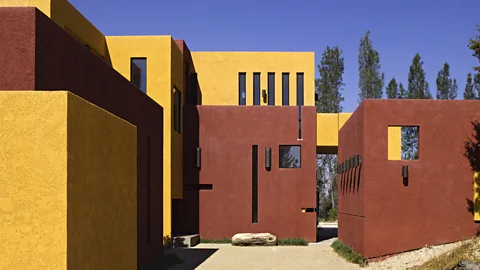 House + House
House + HouseSituated in Glen Ellen, California, this House + House project boldly pairs a deep yellow with ochre.
Spread over its gently sloping site like a pile of building blocks, this 3,200 sq ft home features bold forms that cast strong shadows and lay against each other in constantly changing configurations.
Red and ochre stucco contrast the intense blue sky and deep green of the pines; charcoal grey cedar trellises and window framing compliments the weathered bark of the oak clusters.
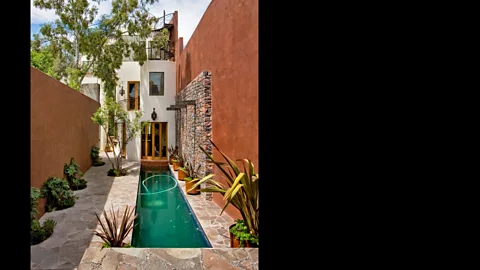 House + House
House + HouseWithin Mexico, House + House’s love of colour, can be found from Baja California to San Miguel de Allende, the colonial town where there are multiple examples of their work.
Another of their homes that is big on bold lines and bright colours is Casa Lluvia Blanca, which can be found in the centre of this historic town.
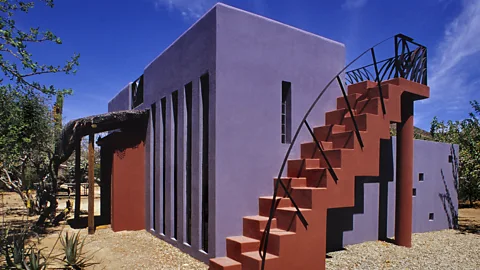 House + House
House + HouseBuilt around an old tree in Baja California, Casa de las Buenas Almas is one of the projects featured in the architects’ book, Houses in the Sun: Light, Movement, Embrace.
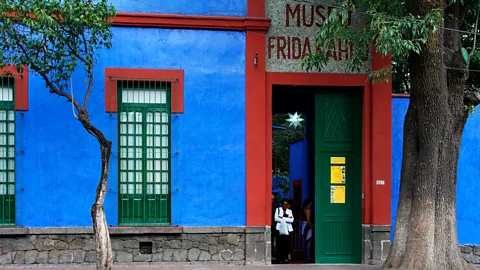 Alamy
AlamyKnown as the Blue House, Frida Kahlo’s family home was turned into a museum in 1958, four years after the death of Mexico’s leading female artist. It now contains some of her personal objects and paintings, and is an ode to Mexico’s love of colour.
In November 1955, Mexican poet Carlos Pellicer described the house as: “painted blue within and without, it seems to harbour a little bit of sky.”
“It is the typical tranquil village house, where good food and deep sleep give one the energy needed to live without serious alarms, and to die in peace.”
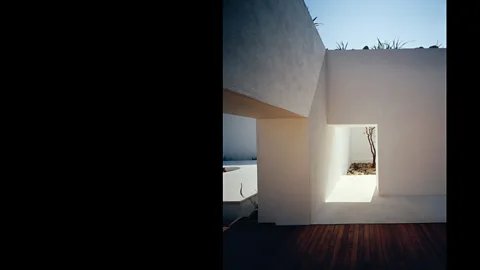 Schiffer Books
Schiffer BooksStill, sometimes, white is the only answer. Consider this minimalist entrance to a Mexican yoga studio built using sturdy Mexican craftsmanship. The studio was created by the firm Hierve, based between Mexico City and London and designed by Alejandro Villarreal for the Santa Maria project (2010) in Valle de Bravo, Mexico.
It is featured in the book Contemporary Mexican Architecture: Continuing the Legacy of Luis Barragán, published by Schiffer Books.
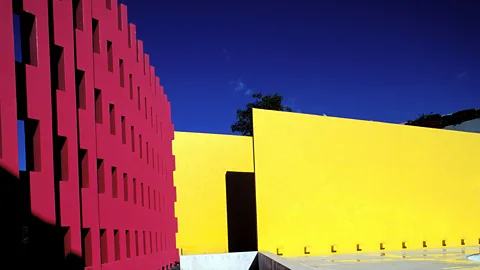 Alamy
AlamyThe book showcases the work of 26 contemporary Mexican architects.
“Mexico’s contemporary architecture got its awakening through the eyes of Luis Barragán, one of Mexico’s most influential 20th-Century architects,” writes author Sandy Baum in the introduction.
The foreward continues: “Barragán changed Mexico’s architecture into a vibrant, sensuous Mexican aesthetic by adding vivid colours and textural contrasts and accentuating his buildings with natural surroundings. He once said that light and water were his favourite themes.”
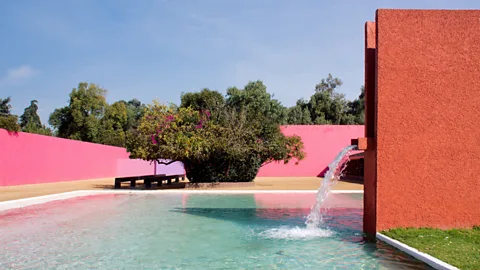 Šarūnas Burdulis | CC BY-NC-SA 2.0
Šarūnas Burdulis | CC BY-NC-SA 2.0Cuadra San Cristóbal, by Luis Barragán
Completed in 1968, this Mexico City equine estate is an iconic example of the poetic, emotive and bold work of Barragán. It has a four-bedroom main house, a staff apartment, and two pools: one for people and another for horses.
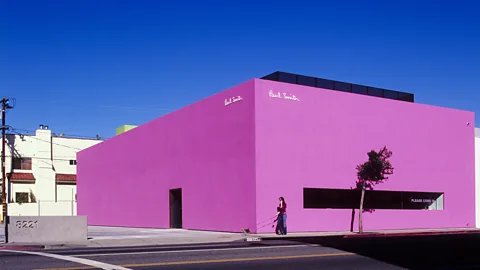 Paul Smith
Paul SmithBarragán’s original use of bold colours is hard to beat, but modern day interpretations of Mexico’s colour maestro include an eye-catching pink building that serves as the Paul Smith shop on Melrose Avenue in Los Angeles, home to a sizeable Mexican population.
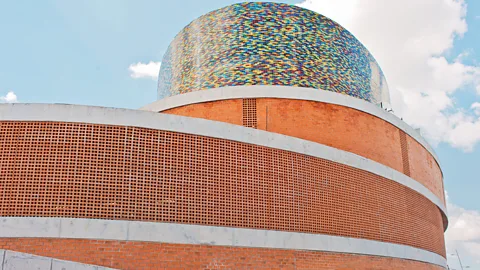 David Corona
David CoronaMexican architectural designers Estudio 3.14 used colourful mosaic tiles to create the eye-popping Centro Cultural Constitución in Zapopan, completed in 2011.
A cultural center in a popular neighbourhood of Guadalajara, it was conceived to be a very basic, naked structure. Apparent finishes make for a very durable transparent and colorful building at the heart of a roundabout. The ramp leads from a public library to a music school, modern piazza for local residents.
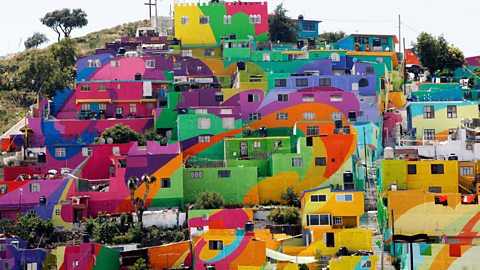 Alamy
AlamyOr why not bring a community together by painting a whole neighbourhood?
“Waves of rainbow colour cascade down a hillside neighbourhood in Mexico’s drug capital as a street art collective paints over 200 houses,” reported Weburbanist.com about a project in 2015 to transform Las Palmitas, a poor Mexican neighbourhood, into something with a brighter outlook.
The artists’ collective, German Crew, used orange, yellow, green, fuchsia and blue to cover almost every building and create a giant mural.
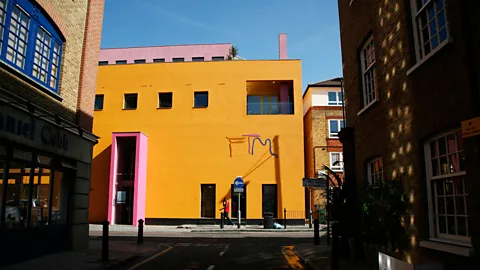 Alamy
AlamyThe influence of Barragán can be felt strongly across the pond from Mexico, too. Visitors can find a slice of Mexican colour in the Bermondsey district of London, thanks to the bold vision of another Mexican colour maestro, Ricardo Legorreta. In 2003, he designed Zandra Rhodes’ Fashion and Textile Museum.
“Ricardo Legorreta helped put Mexican architecture on the world map,” wrote The Independent newspaper in his obituary in 2012.
“His works brightened up his nation's often smog-grey capital, Mexico City, as well as towns and cities in the south-western US states that were part of Mexico until the mid-19th Century – California, Texas, New Mexico and Arizona.”
